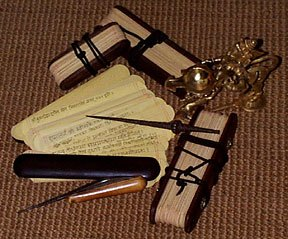As Aurangzeb is Erased, Here are Some Tales From the Flip Side of History

by Harbans Mukhia
Even as the medieval period of Indian history is remembered by some only for the demolition of Hindu temples and the conversion of Hindus to Islam, we hardly stop to notice some instances to the contrary – when mosques were demolished and replaced by temples and when Muslims were converted to Hinduism, either by way of the medieval version of ghar wapsi or directly. Surely that’s something the sangh parivar can feel happy about.
Sher Shah, the Afghan ruler who had snatched the Mughal empire from the hands of Humayun in 1540, vowed to punish the Hindu zamindars who, according to him, had, “after destroying the mosques and places of worship of the Mussalmans converted them into places of idol-worship”. Earlier on, in the port city of Cambay in Gujarat, the Parsis ‘instigated the Hindus to attack the Mussalmans, and the minaret atop (a mosque) was destroyed, the mosque burnt and eighty Mussalmans killed’. To the credit of the Hindu ruler, who checked the facts and found them to be true, he had the mosque restored to its old state.
In Akbar’s time, the theologian Shaikh Ahmad Sirhindi complained that “the Hindus are demolishing mosques and are building their own places of worship in their stead”. Shah Jahan is also on record having seized seven mosques “from their unlawful proprietors” who had “violently seized and appropriated them for their own use in Punjab”. Aurangzeb too refers to one of his two Rajput nobles with the highest mansab of 7000 given to any noble – Jaswant Singh of Jodhpur – who had in around 1658-59 “destroyed mosques and built idol-temples in their stead”. Yet, the two worked together for the next 20-odd years until the Rajput’s death in 1679.
Similarly, there is testimony for reverse conversions from Muslims to Hinduism, unthinkable in a theocratic Islamic state.
Mahmud bin Amir Ali Balkhi, a Central Asian traveler to India in Jahangir’s reign was horrified to see a group of 23 Muslims in Banaras who had deserted their religion and turned Hindu, having fallen in love with Hindu women. “For some time”, he records, “I held their company and questioned them about their mistaken way. They pointed towards the sky and put their fingers on their foreheads. By this I understood that they attributed it to Providence”, Balkhi concludes ruefully.

Zain al-Abidin, pre-Mughal ruler of Kashmir (1420-70) formally permitted Muslim converts to return to their Hindu faith if they so wished. As did Akbar later on, who also decreed that a Hindu converted against his will at any age “could return to the religion of his forefathers”. The eminent 15th-16th century saint-poet Chaitanya Mahaprabhu reconverted the Muslim governor of Odisha and converted a group of Pathans, who were not Hindus in the first instance, even as Hinduism is not a proselytising religion. They earned the sobriquet of ‘Pathan Vaishnavas’.
The Persian language text of the 17th century, Dabistan-i Mazahib, written by a Zoroastrian, Mobed, implies the considerable existence of reconversion at the higher levels and mentions, among others, two high nobles of Shah Jahan’s court – Mirza Salih and Mirza Haidar – who had converted from Hinduism and then returned to their original religion. Neither was punished.
At the mass level, Shah Jahan discovered that in the Bhimbhar region of Kashmir, it was common for Muslim boys to marry Hindu girls, with the boys then converting to Hinduism. He tried to stop it but found that his diktat had no effect. The Sikh Guru, Guru Hargobind, also reconverted a large number and the Dabistan mentions this with some hyperbole: “Not a Muslim was left between the hills of Kiratpur in Punjab and the frontiers of Tibet and Khotan’.
History is never simple, you see.
The author is National Fellow, Indian Council of Historical Research
SOURCE: https://thewire.in/9943/as-aurangzeb-is-erased-here-are-some-tales-from-the-flip-side-of-history/



